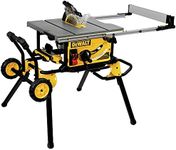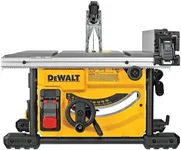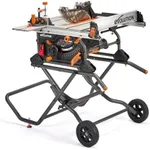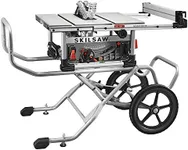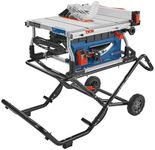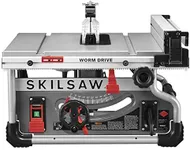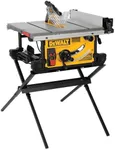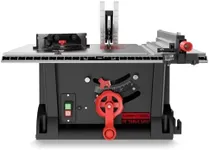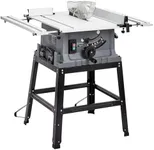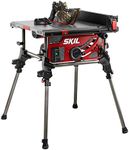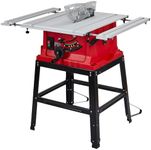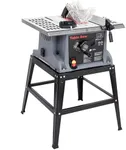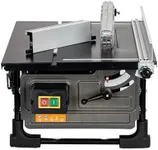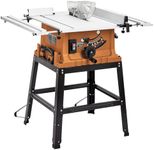Buying Guide for the Best Jobsite Table Saws
When choosing a jobsite table saw, it's important to consider the specific needs of your projects and the environment in which you'll be working. Jobsite table saws are designed to be portable and durable, making them ideal for construction sites and other demanding work environments. To find the best fit for you, focus on the key specifications that will impact performance, ease of use, and safety. Understanding these specs will help you make an informed decision and ensure that the saw you choose meets your requirements.Motor PowerMotor power, measured in amps or horsepower, determines how efficiently the saw can cut through different materials. Higher power motors (15 amps or more) are better for cutting thick, hard materials, while lower power motors (10-12 amps) are sufficient for lighter tasks. Consider the types of materials you'll be working with most often to choose the right motor power for your needs.
Blade SizeThe blade size, typically 10 inches for jobsite table saws, affects the depth of cut and the types of cuts you can make. Larger blades can cut through thicker materials, while smaller blades are more suited for finer, detailed work. Think about the maximum thickness of the materials you'll be cutting to determine the appropriate blade size.
Rip CapacityRip capacity refers to the maximum width of material that can be cut to the right of the blade. A larger rip capacity (24-30 inches or more) allows for cutting wider pieces of wood, which is useful for larger projects. If you primarily work with smaller pieces, a lower rip capacity may be sufficient. Assess the typical size of your workpieces to choose the right rip capacity.
PortabilityPortability is crucial for jobsite table saws, as they need to be easily transported between job sites. Look for features like a lightweight design, foldable stands, and wheels for easy movement. If you frequently move your saw, prioritize models that offer these portability features. Consider how often and how far you'll need to transport the saw to determine the level of portability you need.
Fence SystemThe fence system helps guide the material during cutting, ensuring accuracy and safety. A good fence system should be easy to adjust and lock securely in place. Higher-end models offer more precise and stable fence systems, which are beneficial for detailed and repetitive cuts. Evaluate the importance of precision in your work to decide on the quality of the fence system you need.
Safety FeaturesSafety features such as blade guards, riving knives, and anti-kickback pawls are essential to prevent accidents. Some models also include flesh-sensing technology that stops the blade instantly if it comes into contact with skin. Prioritize saws with comprehensive safety features, especially if you are new to using table saws or if safety is a top concern for you.
Dust CollectionDust collection systems help keep your work area clean and reduce the amount of airborne dust, which is important for both health and visibility. Look for saws with built-in dust ports that can be connected to a vacuum or dust collection system. If you work in environments where dust control is critical, prioritize models with efficient dust collection capabilities.
